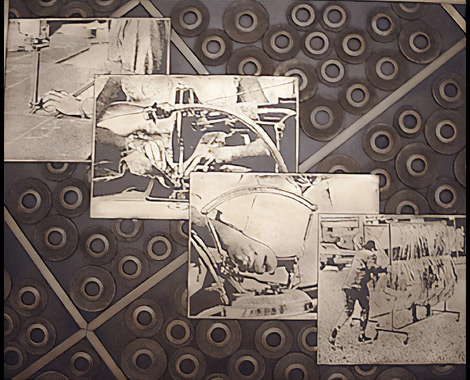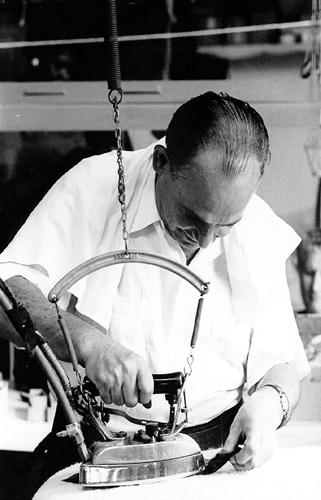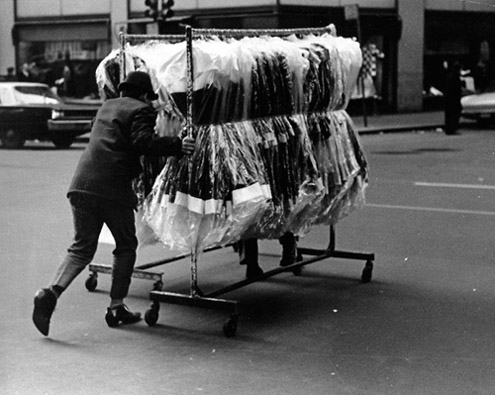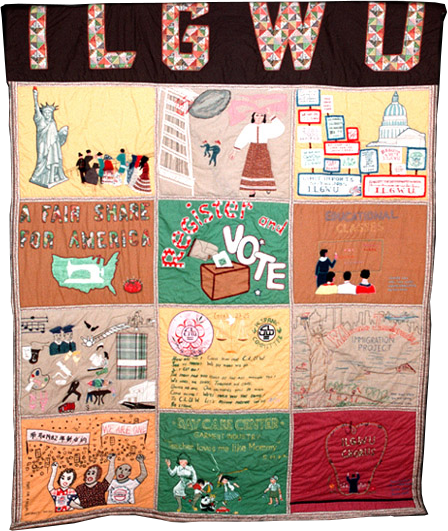Union Square
A National Historic Landmark
∴ Plaques ∴
∴ Plaques ∴
Tools & Skills
New York city garment workers produced 37 percent of the nation’s ready-to-wear clothing in 1900, and many of these men and women were immigrants living and working in neighborhoods near Union Square. The peak of employment in the industry was in 1947 when 350,000 people worked in the industry. Toward the turn of the 21st century, the apparel industry is once again a gateway job for new immigrants, and there has been a resurgence of sweatshops. Garment unions are again organizing against these sweatshop conditions. The city remains a fashion capital of the world, and this plaque evokes the skills and tools at its heart.

Plaque Sources
Spools
Spools of thread in a diamond grid shelf were a common sight in garment shops throughout the century.

Undated photograph from UNITE Archives, Kheel Center, Cornell University

Undated photograph from UNITE Archives, Kheel Center, Cornell University
Cutters
Cutters, who cut many layers of fabric at a time into the pieces of a pattern, were–and still are–among the most skilled workers in the garment industry.
Presser
Presser at work.

Undated photograph from UNITE Archives, Kheel Center, Cornell University

Undated photograph from UNITE Archives, Kheel Center, Cornell University
Garments
A worker pushes a rack of new clothes.
Related
ILGWU Quilt
Made by the garment worker and organizer Kathy Andrade with the Chinese and the Hispanic committees of the Coalition of Labor Union Women (CLUW), and presented to the president of the ILGWU at a convention circa 1987. Note the plaque depicting immigrants arriving under the gaze of the statue of liberty.
Private collection, photograph of quilt by Teddy Fung.

